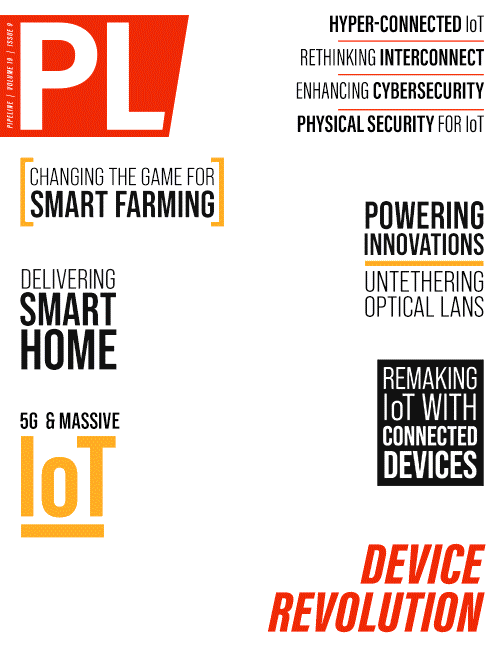Massive IoT and 5G:
What’s Next for Large-Scale Cellular IoT?
Street Smarts
To some, smart cities represent the last stop on society’s road to utopia. The successful implementation of smart city technology depends on several key factors, however. The collection and analysis of big data to influence improvements in city operations is one such example; therefore, it is imperative that the orchestration and management of device data is carried out in an efficient manner. Another factor has to do with planning for the integration of large volumes of IoT devices and sensors into most operations within a given city. Cities must prepare for and continuously weave connected devices and sensors into their existing infrastructure. Additionally, mission-critical security that is both scalable and extremely effective is paramount. As cities become increasingly reliant on the digital capabilities facilitated by smart cities, they inherently become more vulnerable to cyberattacks from nefarious actors. The mitigation of such risks requires that security measures be baked into mobile networks, wired internet infrastructure, and the cloud from the edge.
Of course, no smart city is truly “smart” without 5G technology, which maximizes the technical capabilities for everything from high-speed cameras and large-scale vehicle fleet automation to smart monitoring of the environment. 5G technology is continuously evolving, and the latest 2022 5G specification introduced a new 5G technology flavor called Reduced Capability (RedCap, aka NR-Light or NR-Lite)—the perfect trade-off to bridge the capability and complexity gap between 5G enhanced mobile broadband (eMBB) and ultra-low latency communication (URLLC), and the low power consumption and cost efficiency typical of LPWAN technologies.
Further, to fully take advantage of 5G’s potential, both private 5G and LTE networks may be utilized. In leveraging the available technology in such a way, it’s possible to separate specific IoT applications and services from the wider network—a delineation that allows entities with elevated security concerns, such as hospitals and financial institutions, to experience the benefits of first-class connectivity with minimal risk of data loss or theft. Additionally, locations like school campuses and city streets can benefit from seamless roaming while offering smart citizens the ability to switch between public and private networks.
To be sure, the rise of IoT applications has led to the connection of millions of devices. Behind the scenes of it all, helping facilitate the magic are mobile broadband networks, which allow for the connection of low-data smart sensors that generate the massive machine communication infrastructure we know as Massive IoT. As such infrastructures grow over time, the limitations of traditional mobile networks to enhance technological progress become increasingly apparent. While small cells play a major role in the further evolution of these networks, they serve something of a different purpose when comparing their effects on mobile broadband to their effects on Massive IoT. In the case of the former, small cells are integral for delivering mmWave coverage. By overlaying new signals in the mid-band spectrum, they can achieve greater capacity as well as higher average data rates. With Massive IoT, however, small cells boost the areal density of 5G connections for swarms of sensors and similarly low-power, low-data IoT devices. Consequently, 5G integration is absolutely central to accommodating advanced AI- and sensor-enabled technology.
Tracking Along
Asset tracking is another prime use case for Massive IoT. The extraordinary telematics solutions made possible by Massive IoT technology can assist fleet managers and logistics specialists in streamlining and optimizing their supply chains and enhancing



















